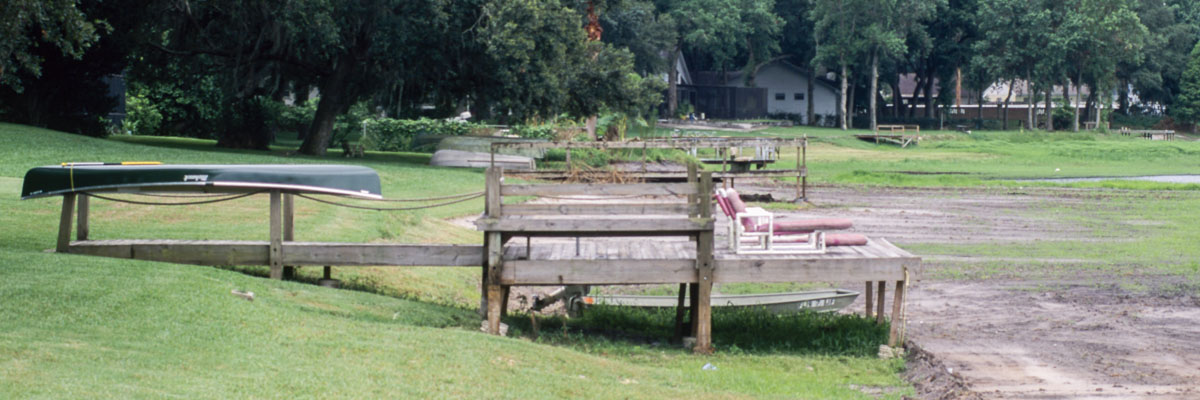Fluctuating lake levels

Thousands of lakes dot the Florida landscape, adding to the state’s unique environment. Florida’s lakes add to the quality of life for the state’s residents and visitors and provide habitat critical to the survival of wildlife such as alligators, turtles, fish and birds. The natural beauty and recreational opportunities provided by Florida’s lakes contribute significantly to the state and local economies.
Florida’s lakes vary greatly in their size — ranging from thousands of acres to less than one acre. Many Florida lakes were formed from sinkholes — areas where the erosion of underground limestone allowed depressions to form in the Earth. Some lakes are naturally connected to other water bodies, allowing water and aquatic and wetland-dependent organisms to move among lakes and between lakes and rivers. Other lakes are artificially connected by canals dug decades ago to relocate water, in many cases to protect farms and communities from floods.
Most of Florida’s lakes are landlocked, receiving water directly from rainfall, from stormwater and from seepage from surrounding soils. Rainfall, either directly or indirectly from stormwater runoff and shallow groundwater seepage, is the single greatest factor affecting water levels in Florida’s lakes. In drier than normal years when the amount of evaporation and seepage exceeds the amount of rainfall, lake levels decline. In wetter than normal years, lake levels increase.
Water levels in Florida’s lakes vary over time from short-term, annual wet season rises and dry season declines to long-term fluctuations caused by multi-decade rainfall trends. During periods of below-normal rainfall, lake levels may continue to decline for years, affecting the use of docks and affecting lakeside businesses. Lake levels generally rebound, leading to water levels so high that lakeside property owners may, at times, experience too much water.
While the St. Johns River Water Management District has some control over lake levels in lakes such as the Harris Chain of Lakes in Lake County and Lake Washington in Brevard County through the operation of dams or other water control structures, water level fluctuations in most lakes are predominantly driven by rainfall. In lakes without water control structures, such as is the case with most of Florida’s lakes, little can be done to artificially raise or lower water levels.
Water withdrawals from surface and groundwater sources can also affect lake levels. As water levels belowground decline, the difference in elevation between the lake water surface and the aquifer water surface increases, causing an increase in water seeping from lakes into the aquifer. The result may be fewer flooding events and more dewatering events over a long period of time.
The district’s minimum flows and levels (MFLs) program typically establishes multiple MFLs that may allow for some consumptive use of water while protecting aquatic and wetland systems from significant harm by requiring a minimum number of flooding events and allowing for a maximum number of dewatering events over a long period.
Fluctuating water levels are normal and beneficial for Florida’s lakes. Benefits include:
- Growth of new vegetation on exposed lake bottom and in adjacent marshes due to seed germination on dewatered soils
- Improved habitat for fish and other aquatic organisms, and improved water quality (upon reflooding) as a result of increased vegetation growth during dewatering events
The fluctuations that bring extremely high water levels also provide environmental benefits, including:
- Rehydration of adjacent wetland vegetation and soils
- Improved wildlife habitat through plant growth and soil hydration
- Increased fish population through provision of habitat for fish feeding and spawning
- Improved water quality through the settling and removal of pollutants in wetlands

